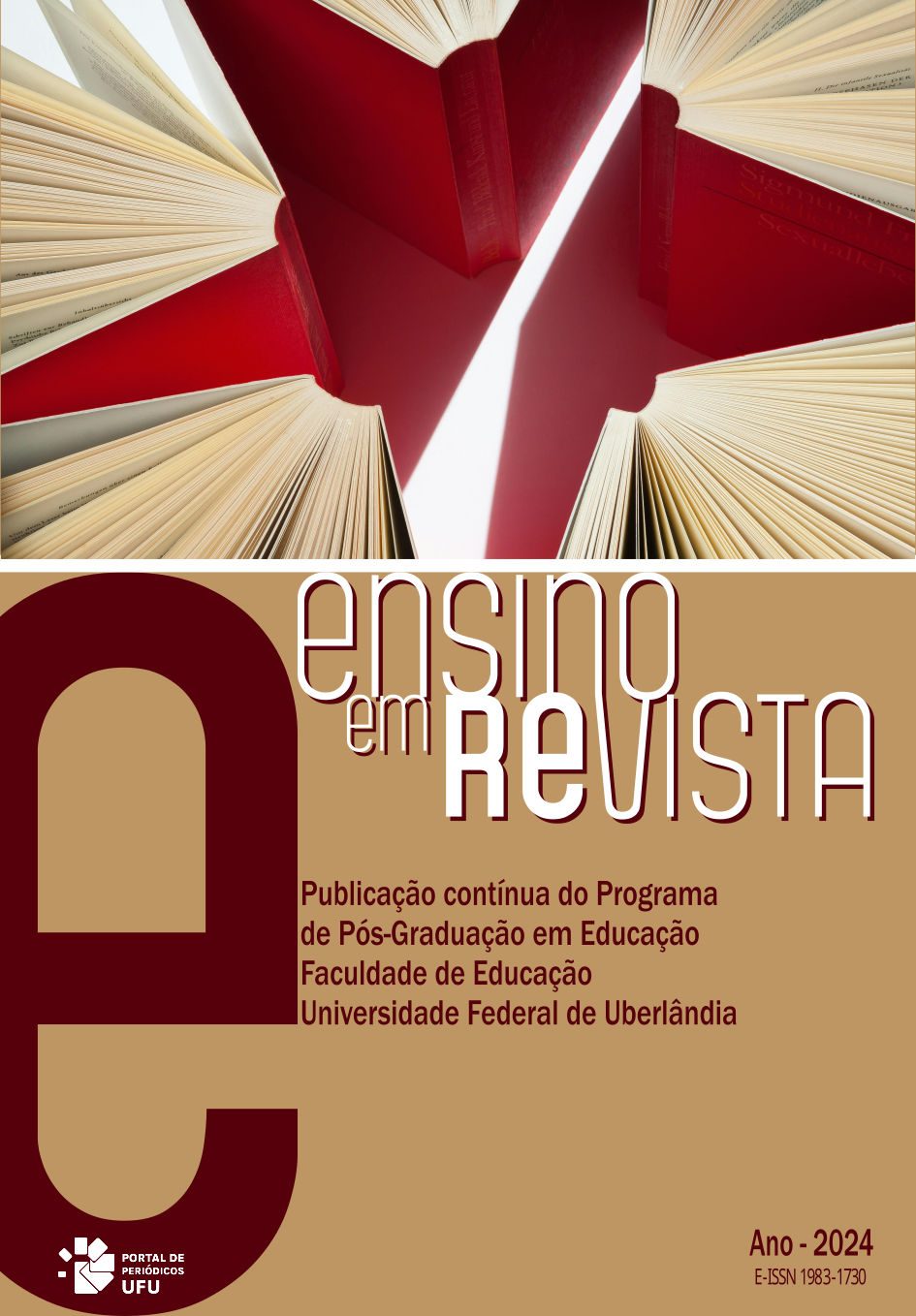Statistical literacy according to GAISE and BNCC: parities and contrasts
Main Article Content
Abstract
The 21st century showed the potential of statistics for society, determining that statistical literacy should start in the school phase. In Brazil, the Common National Curriculum Basis (BNCC) reflects a change of perspective in the teaching of statistics including Probability and Statistics as a thematic unit of Mathematics in Elementary School. This study aims to contribute to the discussion on statistics education, investigating the extent to which the BNCC's Statistics and Probability skills for the first six years of Elementary School have the potential to develop statistical literacy. To provoke and lead reflection, we developed a documentary analysis based on combined reading that relates the skills of the thematic unit Probability and Statistics of the BNCC from the first to the sixth school year with the characteristic skills of the initial stage of the development of statistical literacy according to the Guidelines for Assessment and Instruction in Statistical Education (GAISE). In particular, it stands out as reflections emerging from the analysis that the BNCC has the potential to develop statistical literacy in the early years of Elementary School through the proposition of investigations and that the probability skills at the BNCC reveal a construction aimed at working with probability as a separate discipline from statistics, without establishing a clear connection between them.
Downloads
Article Details

This work is licensed under a Creative Commons Attribution-NonCommercial-NoDerivatives 4.0 International License.
The published works are the property of their authors, who may make use of them for subsequent publications, always including the original edition (original title, Ensino em Re-Vista, volume, number, pages). All articles in this journal are the sole responsibility of their authors, and no legal responsibility for their content rests with the Journal or EDUFU.
References
BACCAR, M. H. M. M.; NOVAES, A. M.; RANGEL, L; LANDIM, F. M. P. F.; LEAL, V. M.; REIS, V. P. da C.; OLIVEIRA, R. M. A de. Uma Reflexão sobre o Letramento Estatístico e as Diretrizes Curriculares no Brasil para os Anos do Ensino Fundamental. Revista Baiana de Educação Matemática, v. 03, n. 01, p. 01-23, e202222, jan./dez., 2022. DOI: https://doi.org/10.47207/rbem.v3i01.15717.
BARGAGLIOTTI, A. et al. Pre-K–12 Guidelines for Assessment and Instruction in Statistics Education (GAISE II): A Framework for Statistics and Data Science Education. Alexandria, VA: American Statistical Association. 2020. DOI: https://doi.org/10.5951/MTLT.2020.0343.
BEN-ZVI D., MAKAR K., GARFIELD J. (Eds.). (2017). International handbook of research in statistics education. Springer. DOI: https://doi.org/10.1007/978-3-319-66195-7.
BRASIL. Ministério da Educação. Base Nacional Comum Curricular. Brasília, DF. 2018.
CAMPOS, T. M. M.; CAZORLA, I. M.; KATAOKA, V. Y. Statistics school curricula in Brazil. In: Teaching statistics in school mathematics-Challenges for teaching and teacher education. Springer, Dordrecht, p. 5-8, 2011. DOI: https://doi.org/10.1007/978-94-007-1131-0_1.
COBB, G. W.; MOORE, D. S. Mathematics, Statistics, and Teaching. The American Mathematical Monthly, Washington, v.104, n.9, p.801-823, nov.1997. DOI: https://doi.org/10.2307/2975286.
CORRÊA, P. D.; RANGEL, L. The teaching of fractions – Emerging questions from the combined reading of Brazilian and Canadian curricular documents. International Journal for Cross-Disciplinary Subjects in Education, v. 12, n. 2, 4473-4483, 2021b. DOI: https://doi.org/10.20533/ijcdse.2042.6364.2021.0547
CORRÊA, P. D.; RANGEL, L. A combined reading between Brazilian and Canadian mathematics curricula: The teaching of numbers. In Proceedings of the Canada International Conference on Education, p. 118-123, 2021a. Infonomics Society.
CORRÊA, P. D.; RANGEL, L. Combined Reading – A Methodological Approach for Documental Curricular Analysis. In: THOMPSON, D.; HUNTLEY, M.A. & SUURTAMM, C. (No prelo) Lessons Learned from Research on Mathematics Curriculum. Information Age Publishing.
FRANKLIN, C. et al. Guidelines for Assessment and Instruction in Statistics Education (GAISE) Report - A Pre-K–12 Curriculum Framework. Alexandria: American Statistical Association, 2005. Disponível em: https://www.amstat.org/asa/files/pdfs/gaise/gaiseprek12_full.pdf. Acesso em: 30 jun. 2023.
GAL, I. Statistical Literacy: Meanings, Components, Responsibilities. In: Ben-Zvi, D.; Garfield, J. The Challenge of Developing Statistical Literacy, Reasoning and Thinking, p. 47-78. 2004.
GAL, I. Promoting statistical literacy: Challenges and reflections with a Brazilian perspective. In: MONTEIRO, Carlos; CARVALHO, Liliane (org). Temas emergentes em letramento estatístico, Recife: Ed. UFPE, v.1, p.37-59. 2021
LOUZADA, F.; CORDANI, L.; BAZÁN, J.; BARBOSA, T. Reflexões a respeito dos conteúdos de Probabilidade e Estatística na Escola no Brasil – Uma proposta. Associação Brasileira de Estatística (ABE). Brasil, 2015. DOI: http://dx.doi.org/10.13140/RG.2.1.2210.5368.
MEDINA, R.; REIS, V; NOVAES, A.; RANGEL, L.; LANDIM, F.; SANTOS, M. Estatística e Probabilidade no Ensino Fundamental: a Experiência de uma Abordagem Integrada, Anais XIV ENEM, Encontro Nacional de Educação Matemática, 2022.
NOVAES, A.; RANGEL, L.; LANDIM, F.; LEAL, V. M.; BACCAR, M.H.M.M. Orientações Curriculares e Letramento Estatístico: uma leitura combinada da BNCC e do GAISE, Anais XIV ENEM, Encontro Nacional de Educação Matemática, 2022.
WILD, C. J.; PFANNKUCH, M. Statistical thinking in empirical enquiry. International Statistical Review, v. 67, n. 3, p. 223-248, 1999. DOI: https://doi.org/10.1111/j.1751-5823.1999.tb00442.x.
ZIEFFLER, A.; GARFIELD, J.; FRY, E. What is statistics education? International handbook of research in statistics education, p. 37-70, 2018. DOI: http://dx.doi.org/10.1007/978-3-319-66195-7_2.

